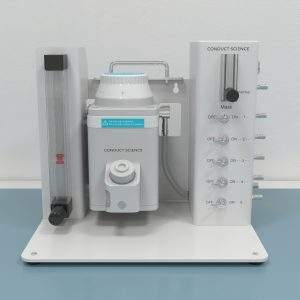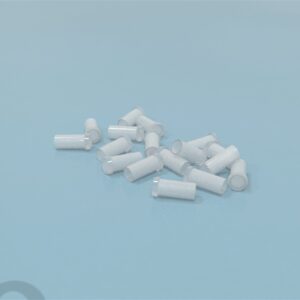$1,590.00

MazeEngineers empowers preclinical neuroscience research with meticulously designed, customizable behavioral apparatuses. From manual classic mazes to fully automated smart systems, we provide the tools scientists need to capture high-quality, reproducible data for studies on learning, memory, anxiety, and depression.

bool(false)


Features |
Tank: 20×15×20cm (length×width×depth) |

The Zebrafish Black-White Preference paradigm serves as a behavioral metric for assessing fear and anxiety levels in zebrafish. This versatile tool comprises a rectangular aquarium that can be customized into various configurations, allowing researchers to explore the impact of tank depth on color preference and vice versa.
Zebrafish has emerged as a valuable model organism for studying human anxiety, with growing evidence supporting its efficacy in neurobehavioral research. Its popularity in biomedical studies stems from its reliable behavioral scoring and cost-effective experimental approaches. Preclinical investigations employing the zebrafish model have significantly contributed to our understanding of anxiety-related neuropathologies and facilitated the development of innovative pharmaceutical interventions.
Anxiety poses a substantial burden on both individuals and society, yet the specific behaviors indicative of anxiety in zebrafish remain unclear. It is widely believed that stimulus avoidance serves as a primary indicator of fear.
Rachel and Denis (2012) introduced the Zebrafish Black-White Preference paradigm to elucidate behaviors associated with avoided stimuli. Subjects are confined within a tank featuring white, black, and transparent sections, allowing researchers to observe and score their behaviors in response to these stimuli.
The apparatus comprises a rectangular tank with split-depth capabilities, measuring 20 cm x 15 cm x 20 cm. In the split configuration, a plexiglass partition divides the tank, with one side set to a depth of 10 cm and the other to 15 cm. Alternatively, in the shallow and deep configurations, both sides maintain depths of 5 cm and 15 cm, respectively.
The tank sides are adorned with either black or white paper, or left transparent, depending on the specific test trial being conducted.
Illumination is provided from above, ranging from 400 lux for the black condition to 600 lux for the transparent condition, ensuring consistent lighting conditions across experimental variations.
Ensure the fish are accommodated in the housing rack with a reliable filtration system and continuous oxygen supply to maintain optimal water quality. Feed the fish once or twice daily to meet their nutritional needs. Maintain the water temperature at a constant 25ºC, and synchronize the light/dark cycle in the room to a 14-hour light and 10-hour dark regimen to mimic natural conditions.
Install a video camera, such as the Noldus EthoVision® XT, positioned approximately 1 meter above the tank to facilitate continuous monitoring of the fish’s location, activity levels, and swimming patterns. This setup allows for comprehensive data collection and analysis to better understand the behavior of the fish under investigation.
Partition the subjects into five cohorts, each comprising 11-13 fish. Assess three groups for Depth Preference (DP) by confining them to tanks adorned with white, black, and transparent papers, respectively. Dedicate the remaining two groups to Color Preference (CP) trials, placing them in single-depth containers either set to 5 cm (shallow) or 15 cm (deep) with a uniform black or white interior.
With care, transfer the fish from their home tanks to the experimental containers using a gentle netting method. Observe each subject for a duration of 15 minutes, documenting their behavior and responses within the designated environment. This approach enables systematic evaluation of both depth and color preferences in the fish population under study.
In a study conducted by Rachel and Denis (2012), 59 adult wild-type fish were reared in laboratory conditions and subjected to various test configurations within the split-depth tank. Manipulations involving color stimuli yielded significant effects on depth preference; notably, fish in the transparent tank exhibited the strongest preference for the deeper side, while those in the black tank displayed the weakest preference. Interestingly, compared to fish in black tanks, those in transparent tanks demonstrated increased immobility and reduced shuttle behavior. Among all color manipulations, black induced the least anxiety in the fish, whereas transparent induced the highest levels of anxiety.
Across all experimental groups, zebrafish spent a greater amount of time in the upper portion of the tank. Additionally, when given a choice between black and white sides, the fish consistently preferred the black side of the tank.
Conversely, manipulations involving depth stimuli had minimal impact on color preference. Fish exhibited a pronounced avoidance of white regardless of whether they were confined in deep or shallow conditions.
Primary measures noted in depth-preference and color preference are:
The split-depth tank presents a promising model for assessing anxiety-related states in zebrafish. This tool facilitates the investigation of neural circuits, genes, and molecular pathways underlying neurobehavioral processes associated with anxiety. With its adaptable configurations, the apparatus offers versatility and novelty in modeling anxiety-related behaviors in fish, complementing traditional rodent models and offering a conceptual foundation for future research in biological psychiatry.
An additional advantage of this paradigm is its capacity to evaluate a wide range of behavioral measures through combined assays. While black and white stimuli influence anxiety, researchers can manipulate exposure to investigate other anxiety-related behaviors such as immobility and diving.
Moreover, the apparatus prioritizes animal welfare by providing continuous filtration, eliminating the need for cramped enclosures or stressful training procedures. Fish are not subjected to undue stress or fear, preserving the integrity of their natural behaviors throughout experimentation. This approach fosters ethical and humane research practices while yielding valuable insights into anxiety-related phenomena.
One notable limitation of the Zebrafish Black-White Preference tool lies in its limited scope of laboratory investigation. Presently, the paradigm has only been evaluated using a single strain of Zebrafish—AB. It’s worth noting that different populations of Zebrafish exhibit variations in exploratory behavior, as highlighted by previous studies (Egan et al., 2009; Sackerman et al., 2010). Developing an apparatus capable of studying the behavioral nuances across various fish strains would enhance its reliability and effectiveness.
Moreover, the current design of the apparatus may not be sufficiently robust to investigate, interpret, and predict the effects of genetic or pharmacological manipulations accurately. Continuous experimentation and refinement of the design are essential to enhance efficiency and confer predictive validity to the setup. By iteratively improving the apparatus and expanding its capabilities, researchers can better understand the complex interplay between genetics, pharmacology, and behavior in zebrafish models of anxiety and beyond.
There are no questions yet. Be the first to ask a question about this product.